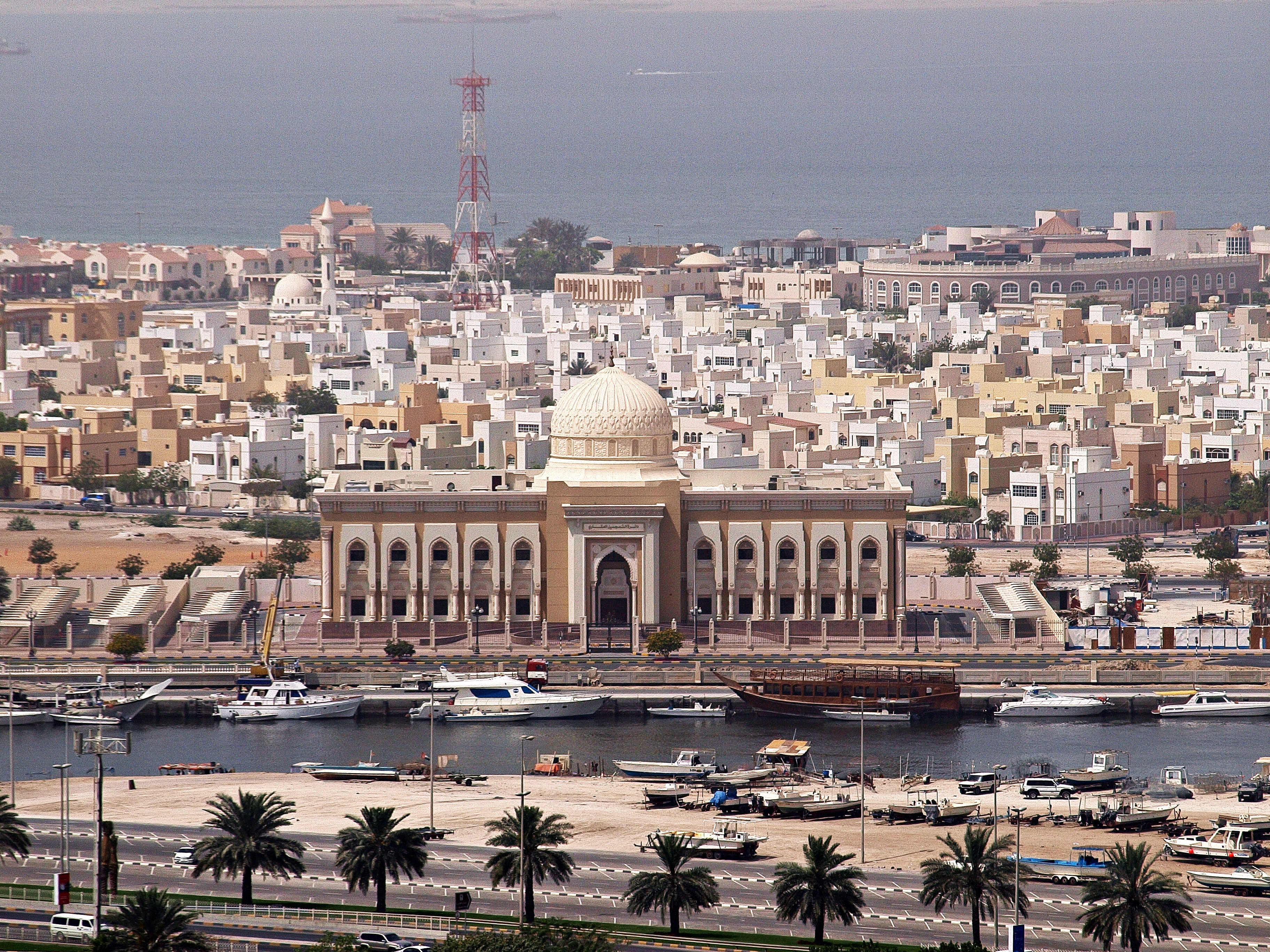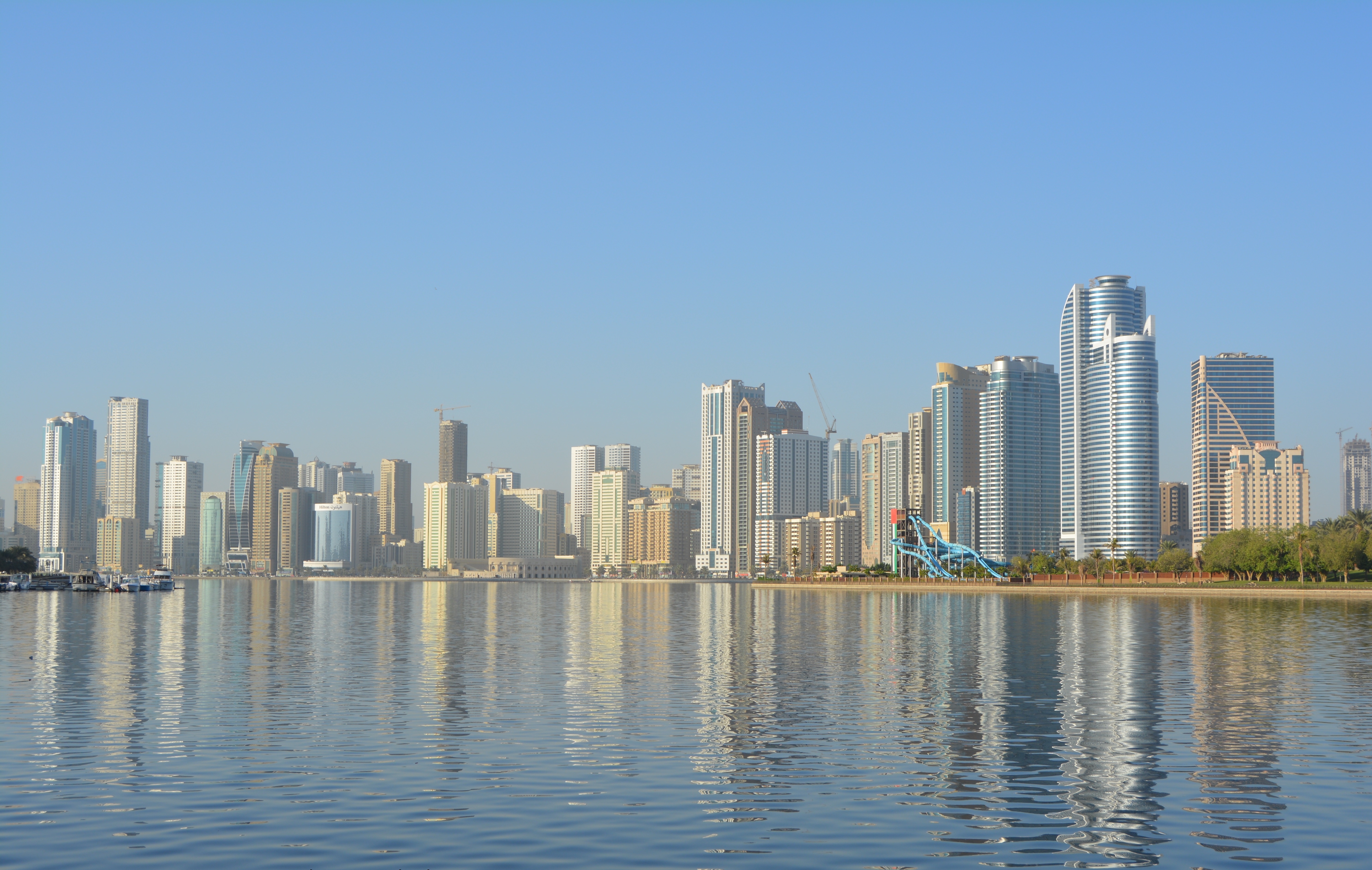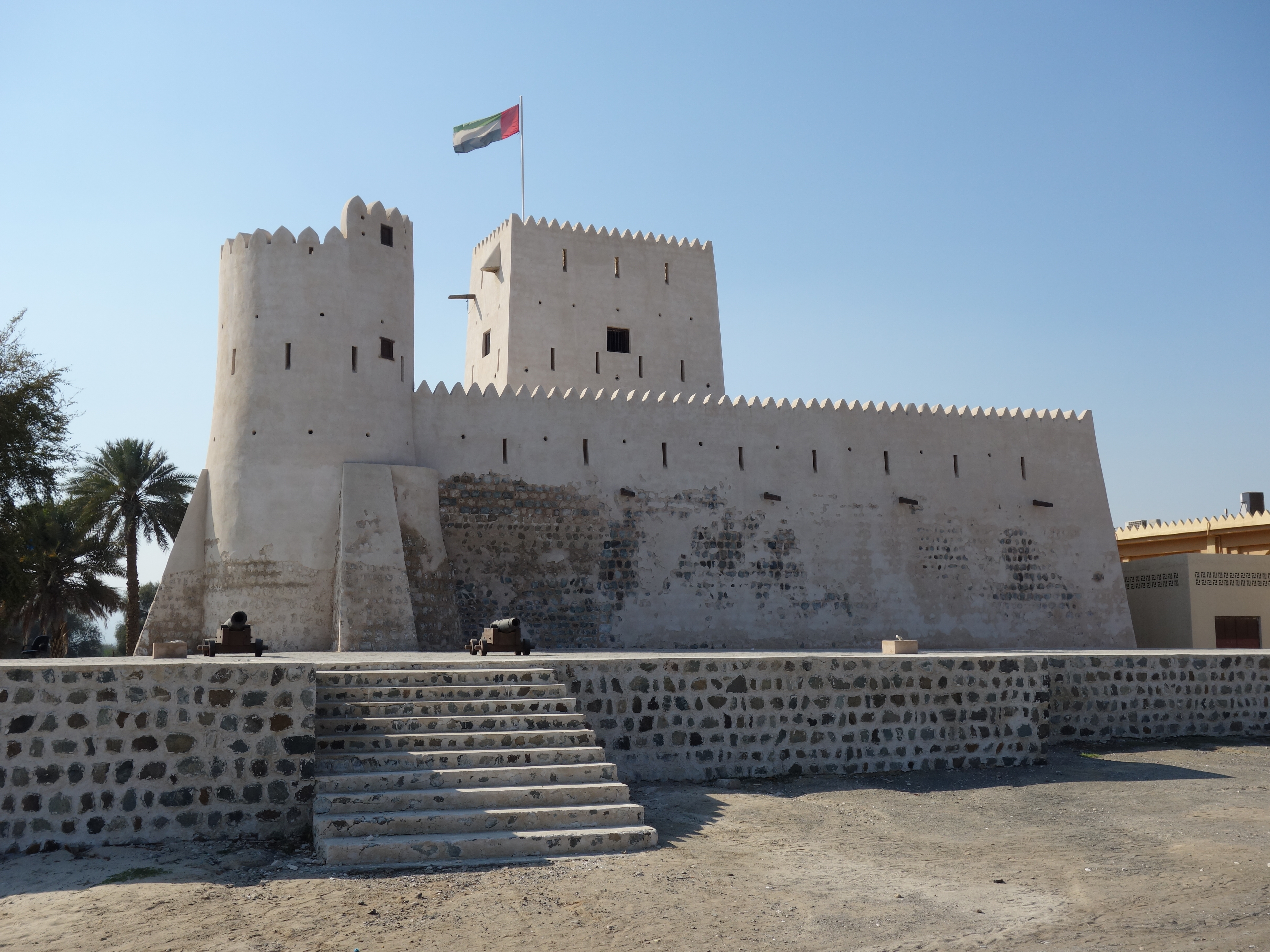|
Dhaid
Dhaid, or Al Dhaid ( ar, ٱلذَّيْد, Adh-Dhayd), is the capital of the Central Region of the Emirate of Sharjah in the United Arab Emirates. An oasis town, it has extensive irrigated date palm plantations with water channelled from the nearby Hajar mountains, at least in part through ancient tunnels dug for that purpose, known as '' aflāj'' in Arabic (''falaj'' in the singular). Dhaid has long occupied a strategic location in the mouth of the important Wadi Siji. History and prehistory An archaeological site discovered here in 2015 shows evidence of habitation by humans going back hundreds of thousands of years to the Stone Age. In particular, awls for piercing holes in the leather of animal hides, scrapers for cleaning leather, and stone axes were found here. At the turn of the 20th century, Dhaid consisted of some 140 houses, owned by sections of the Tanaij, Bani Qitab and Khawatir tribes, including larger houses with mud brick towers. It also had a four-towered Al-Q ... [...More Info...] [...Related Items...] OR: [Wikipedia] [Google] [Baidu] |
Dhaid Fort
Dhaid Fort, (Also known as ''Al Hisn Dhaid'') is a restored C18th fortification in the city of Dhaid, Sharjah, in the United Arab Emirates. It has long been an important stronghold for the Ruling families of Sharjah and Ras Al Khaimah and a key strategic asset in maintaining a historical Qawasim dominance of the inland areas of the Northern Emirates. Heritage The reconstruction of the ruined fort took place between 2017 and 2021 and was undertaken on the orders of the Ruler of Sharjah and noted historian, Dr Sultan bin Muhammed Al Qasimi. The original fortification dates back to 1750. The reconstruction of the fort and surrounding area involved the demolition of a number of illegal buildings, including labour accommodation. The fort is intended to form the centre of a new heritage area in the city, including a public square, the restoration of the Al-Sharia Mosque, the construction of a folklore market and majlis as well as a wildlife museum. Dhaid Fort and the city's extensive ... [...More Info...] [...Related Items...] OR: [Wikipedia] [Google] [Baidu] |
Khalid Bin Ahmad Al Qasimi
Sheikh Khalid bin Ahmad Al Qasimi was the Ruler of Sharjah, a Trucial State and now one of the United Arab Emirates, from 1914–1924 and Ras Al Khaimah from 1914–1921. He acceded on the death of Saqr bin Khalid Al Qasimi. His rule was tumultuous and unpopular, marked by internecine conflicts and public discontent and saw the final disintegration of the Al Qasimi's joint rule over Sharjah and Ras Al Khaimah. Deposed as Ruler of Sharjah in 1924, he went on to become ruler of Dhaid and Kalba (itself recognised by the British as a Trucial State) and a highly influential figure in the ''Shamaliyah'' (the east coast of the peninsula). Accession Saqr bin Khalid Al Qasimi nominated his cousin, Khalid bin Ahmad, as his successor shortly before his death, as his own sons were still minors. One of Khalid bin Ahmad's first acts on becoming Ruler of Sharjah was to settle the question of Jazirat Al Hamra. Home to some 500 houses of the Za'ab tribe (the Emirati family name Al Zaabi deri ... [...More Info...] [...Related Items...] OR: [Wikipedia] [Google] [Baidu] |
Emirate Of Sharjah
The Emirate of Sharjah (; ar, إِمَارَة ٱلشَّارِقَة ') is one of the emirates of the United Arab Emirates, which covers and has a population of over 1,400,000 (2015). It comprises the capital city of Sharjah, after which it is named, and other minor towns and exclaves such as Kalba', Al Dhaid, Dibba Al-Hisn and Khor Fakkan. The emirate is an absolute monarchy. It has been ruled by Sultan bin Muhammad Al-Qasimi since 1972, except for a six-day period during an attempted coup d'etat by his brother, Sheikh Abdulaziz bin Mohammed Al-Qasimi. History Human settlement in the area covered by the emirate has existed for over 120,000 years, with significant finds made of early axes and stone tools as well as Copper and Iron Age implements in Al Dhaid, Al Thuqeibah, Mileiha, Tell Abraq, Muwailah, Al Madam and Jebel Faya. Archaeological finds in the Mleiha area point to human habitation consistent with the spread of humanity from Africa to the wider world, evidenced ... [...More Info...] [...Related Items...] OR: [Wikipedia] [Google] [Baidu] |
Sharjah
Sharjah (; ar, ٱلشَّارقَة ', Gulf Arabic: ''aš-Šārja'') is the third-most populous city in the United Arab Emirates, after Dubai and Abu Dhabi, forming part of the Dubai-Sharjah-Ajman metropolitan area. Sharjah is the capital of the eponymous emirate. The emirate shares legal, political, military and economic functions with the other emirates of the UAE within a federal framework, although each emirate has jurisdiction over some functions such as civil law enforcement and provision and upkeep of local facilities. Sharjah has been ruled by the Al Qasimi dynasty since the 18th century. The city is a centre for culture and industry, and alone contributes 7.4% of the GDP of the United Arab Emirates. The city covers an approximate area of 235 km2 and has a population of over 800,000 (2008). The sale or consumption of alcoholic beverages is prohibited in the emirate of Sharjah without possession of an alcohol licence and alcohol is not served in hotels, restaura ... [...More Info...] [...Related Items...] OR: [Wikipedia] [Google] [Baidu] |
Al Tunaiji
The Tunaij ( ar, الطنيج), also spelled as Tanaij (singular Tunaiji ar, الطنيجي), is an Arab tribe in the United Arab Emirates (UAE). The Tunaij have mostly settled in Dhaid, the inland oasis town of Sharjah, and the Ras Al Khaimah town of Rams. A small number of Tunaij also settled at Hamriyah. At the turn of the 19th century, there were some 4,000 Tunaij in the Northern Emirates, of whom 1,500 were Bedouin. Influential in tribal politics because they could raise a force of some 500 fighting men, the Bedouin Tunaij used Dhaid as a centre and a fortified tower protected the 70-odd Tunaij houses there (the Na'im maintained a similar arrangement at Dhaid). The Tunaij have been linked to the Bani Qitab The Bani Qitab ( ar, بني كتب) is a tribe of the United Arab Emirates (UAE). The singular form of the name, Al Ketbi, is a common family name in the Northern UAE today. Consisting of a settled southern section and a nomadic northern section, t .... The Tunaij of Ra ... [...More Info...] [...Related Items...] OR: [Wikipedia] [Google] [Baidu] |
Masafi
Masafi ( ar, مسافي) is a village located on the edge of the Hajar Mountains in the United Arab Emirates. It sits at the inland entrance of the Wadi Ham, which runs down to Fujairah City. The border between the emirates of Fujairah and Ras Al Khaimah runs through the town, which houses a barracks used by the United Arab Emirates Armed Forces. Overview Until relatively recently, with the construction of the Sharjah to Kalba road and the 'truck road' between Dibba and the 311 highway at Ras al-Khaimah, the road through Masafi was the only route from the interior to the East Coast of the UAE. The road from the inland town of Dhaid splits at Masafi, leading to Dibba to the north and Fujairah City to the south. A number of excavations point to Bronze Age habitation in Masafi, which has a recently restored (2012) stone and adobe fort, smaller but architecturally similar to the nearby Al Bithnah Fort, also restored as part of the same project. The fort encloses an exceptional exam ... [...More Info...] [...Related Items...] OR: [Wikipedia] [Google] [Baidu] |
Kalba
Kalba () is a city in the Emirate of Sharjah in the United Arab Emirates (UAE). It is an exclave of Sharjah lying on the Gulf of Oman coast north of Oman. Khor Kalba (Kalba Creek), an important nature reserve and mangrove swamp, is located south of the town by the Omani border. Kalba Mangrove reserve is open to the public and was developed as an eco-tourism resort by the Sharjah Investment and Development Authority (Shurooq). A number of conservationists and ecologists have expressed concern regarding the project. History Shell middens dating back to the fourth millennium BCE have been found at Kalba, as well as extensive remains of Umm Al Nar era settlement. Portuguese The town was captured by the Portuguese Empire in the 16th century and was referred to as ''Ghallah''. It was part of a series of fortified cities that the Portuguese used to control access to the Persian Gulf and the Gulf of Oman, e.g. Khor Fakan, Muscat, Sohar, Seeb, Qurayyat, Muttrah. Kalba Fort, tod ... [...More Info...] [...Related Items...] OR: [Wikipedia] [Google] [Baidu] |
Bani Qitab
The Bani Qitab ( ar, بني كتب) is a tribe of the United Arab Emirates (UAE). The singular form of the name, Al Ketbi, is a common family name in the Northern UAE today. Consisting of a settled southern section and a nomadic northern section, the tribe was long influential in the conduct of affairs in the interior of the Trucial States. The Northern branch mostly settled in the inland towns of Dhaid and Al Falayah. Settlement The tribe consisted, at the turn of the 19th century, of some 2,100 nomadic Bedouin (of whom some 600 were fighting men) and 2,700 settled people. The Bedouin ''dar'', or district, of the Bani Qitab stretched from South of the Buraimi oasis to the Eastern foothills of the Hajar Mountains, the Jiri plain to the North of Sharjah and the fertile area around Sharjah's inland oasis town of Dhaid. The Southern Bani Qitab, some 500 households, settled around the village of Aflaj Bani Qitab in the Dhahirah area. Over time these separated from the Northern secti ... [...More Info...] [...Related Items...] OR: [Wikipedia] [Google] [Baidu] |
Mleiha
Mleiha, also Mileiha or Malaihah ( ar, ملَيْحَة), is a town in the Emirate of Sharjah, the United Arab Emirates (UAE) with a population of 4,768 (2015), located some south of the inland Sharjah town of Dhaid. It is the location of archaeological remnants dating from the Neolithic to pre-Islamic Arabia and home to the Mleiha Archaeological Centre Meliha Archaeological Centre is a visitor centre and exhibition based around the history and archaeology of the areas surrounding the village of Mleiha in Sharjah, the United Arab Emirates. Built around a preserved Umm Al Nar era tomb, the cent .... Mleiha is a UNESCO World Heritage Site. References See also * List of Ancient Settlements in the UAE Populated places in the Emirate of Sharjah Central Region, Sharjah {{UnitedArabEmirates-geo-stub ... [...More Info...] [...Related Items...] OR: [Wikipedia] [Google] [Baidu] |
Umm Al-Nar Culture
Umm Al Nar ( ar, أُمّ الـنَّـار, Umm an-Nār or Umm al-Nar, lit=Mother of the Fire) is a Bronze Age culture that existed around 2600-2000 BCE in the area of modern-day United Arab Emirates and Northern Oman. The Arabic name has in the past frequently been transliterated as Umm an-Nar and also Umm al-Nar. The etymology derives from the island of the same name which lies adjacent to Abu Dhabi city and which provided early evidence and finds attributed to the period. The Umm Al Nar people were important regional trading intermediaries between the ancient civilisations of Sumeria in Mesopotamia and the Indus Valley Harappan culture. Known to the Sumerians as 'Magan', the area was the source of their copper and diorite as well as a trading entrepot for other goods from the Indus Valley, including carnelian jewellery. Location The key site is well protected, but its location between a refinery and a sensitive military area means public access is currently restricted. The ... [...More Info...] [...Related Items...] OR: [Wikipedia] [Google] [Baidu] |
Mleiha Archaeological Centre
Meliha Archaeological Centre is a visitor centre and exhibition based around the history and archaeology of the areas surrounding the village of Mleiha in Sharjah, the United Arab Emirates. Built around a preserved Umm Al Nar era tomb, the centre details the excavations and discoveries made over the past 40 years at Mleiha and surrounding areas (including Al Thuqeibah, Jebel Faya, Al Madam and Jebel Buhais), particularly the important Faya North East find, which provides evidence that 'anatomically modern humans' were in the Mleiha area between 130,000 and 120,000 years ago. These finds point to the spread of humanity from Africa across the Red Sea to the Persian Gulf region, and onward to populate the world through Iran, India, Europe and Asia. The centre was opened on 24 January 2016 by the Ruler of Sharjah, Sheikh Sultan Bin Muhammad Al Qasimi. The multi-phase eco-tourism development is intended in future to comprise accommodation, a campsite and an astronomical observatory, ... [...More Info...] [...Related Items...] OR: [Wikipedia] [Google] [Baidu] |
Gulf News
''Gulf News'' is a daily English language newspaper published from Dubai, United Arab Emirates. It was first launched in 1978, and is currently distributed throughout the UAE and also in other Persian Gulf Countries. Its online edition was launched in 1996. Through its owner Al Nisr Publishing, it is a subsidiary of the Al Tayer Group, which is chaired by Finance Minister Obaid Al Tayer. History and profile ''Gulf News'' was first launched in tabloid format on 30 September 1978 by UAE businessman Abdul Wahab Galadari; its offices were located on the Airport Road, Dubai. In November 1984, three UAE businessmen, purchased the company and formed Al Nisr Publishing. The new owners of the paper were Obaid Humaid Al Tayer, Abdullah Al Rostamani and Juma Al Majid. With the death of Abdullah Al Rostamani in 2006, his position on the board is held by a family nominee while the other directors remain. Under new ownership, ''Gulf News'' was relaunched on 10 December 1985 and was free to the ... [...More Info...] [...Related Items...] OR: [Wikipedia] [Google] [Baidu] |





